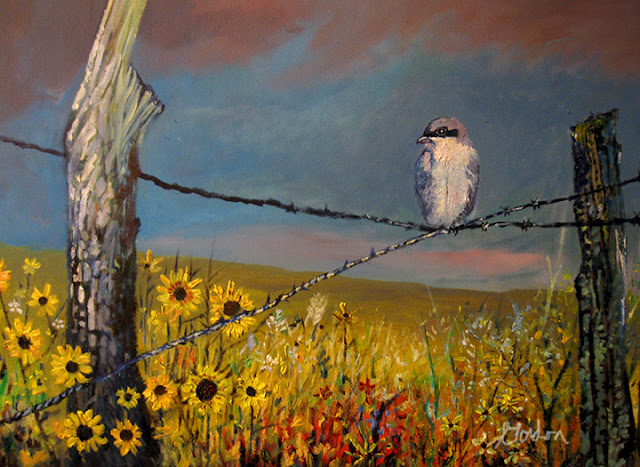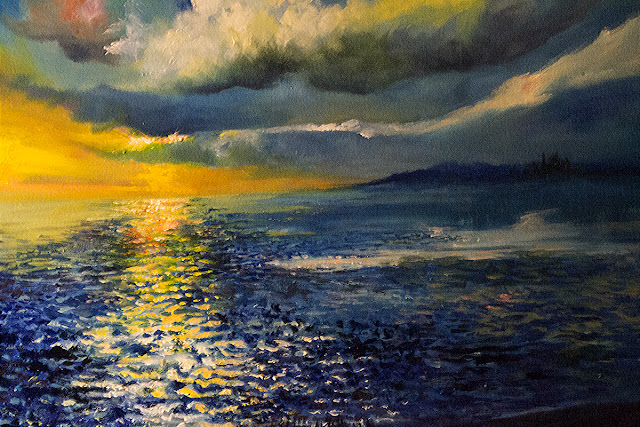I have a tower of heavenly blue morning glories in my backyard. I was impressed when I counted 40 blooms and now as each day passes they have multiplied. At last count 300 plus blooms are climbing a great tower of green leaves to the top of a hackberry tree.
After photographing them on numerous occasions and getting every angle I could, I still felt like I couldn't capture the magnitude of a spectacle of hundreds of morning glories with blooms more than 4 inches in diameter.
I saw them as a mosaic of rich blue hues, so the next progression seemed obvious. What if the tower of blues became individual pieces of art, each different in their own way.
My first attempt was changing the gathering of blue into a mosaic or even a stained glass window, with help from Photoshop, suddenly the blue objects became more vibrant, more unique in the frame.
I am in the process of painting a series of acrylics. It is a series of morning glories as well as the species of passionvine I have collected. I will be showing the whole series at North Haven Gardens, December 3rd.
I'm also planning on adding all of these pieces of art to a complete series of art dedicated to the huge tower that grows by the day. If this goes well, perhaps passionvine will be the next series. Let me know what you think, I would love to hear your comments. Thank you.
As an addendum to this post, I wanted to explain the use of filters on photographs of flowers.
I am very careful about not overusing Photoshop filters and usually avoid them if not necessary for the project.
In this case I wanted to deconstruct the flower and only allow the richness of its color to dominate. I also experimented with the idea that the colors of the flowers were almost like fragments in a mosaic or stained glass. I added light as a backdrop as well as brought back the basic concept of the flower.
I wanted the colors to be at their richest and yet just a hint of the original to show nature's perfect form. The hues in the background only become a tapestry to complement the richness of the blooms.
Let me know what you think.
























